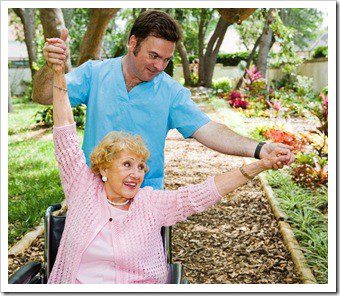
Once upon a time, we looked on osteoporosis as a disease of the elderly, which was easy to spot in older women who walked hunched over or who couldn’t stand straight. In reality, around 20 million women in the U.S. are believed to have osteoporosis, and 80% of them won’t even know it.
Osteoporosis: What is it?
Osteoporosis is a chronic, progressive disease that effectively reduces the amount of bone you have in your body, making you susceptible to fractures, especially of the hip, spine and wrist. Any fracture is disabling, but in older people they can prove fatal. It may surprise you to know that 50% of women and one in eight men will suffer an osteoporosis-related fracture at some point in their life.
Osteoporosis is not the same as arthritis, in that there is no pain from osteoporosis until a fracture happens. The absence of swollen and painful joints does not indicate an absence of osteoporosis, because these symptoms relate to arthritis. It is therefore sensible to check out with your doctor how healthy your bones really are, so that you can take steps to mitigate the onset or deterioration of this brittle bone disease.
Tips to Help You Maintain Good Bone Density
- Take regular exercise, such as walking, rope-jumping, jogging, racquet sports, swimming or aerobics. Do this for a minimum of 20 minutes three times a week for to help strengthen bones and reduce the risk of osteoporosis.
- Weight-lifting is known to trigger an increase in bone density, so this is an excellent way to guard against osteoporosis. However, medical advice on weight-lifting should be sought if you already have the condition to avoid putting excess strain on already-brittle bones.
- Tai Chi, which is a slow and gentle form of martial arts, is a useful strength training exercise if you have severe osteoporosis or have already suffered fractures.
- Care should be taken when bending or lifting objects if you already suffer from osteoporosis. Make sure to bend at the knees, not at the waist, and keep the object close in to your body. Also try to avoid sitting or standing in a hunched position.
- Ensure a sufficient intake of calcium. Recommended daily amounts are 1,000 mg/day for post-menopausal women taking estrogen, and 1,500 mg/day for postmenopausal women not taking estrogen and generally for men and women over 65 years old.
- The best types of calcium supplements are the most absorbable, such as microcrystalline hydroxyapatite concentrate (MCHC), or one of the malates, fumarates, succinates, glutarates, or citrates. Keep to the recommended doses, though, because too much can lead to kidney stones.
- Additional nutritional supplements, such as vitamin D, C, magnesium, zinc and silica may be of use, but talk to your doctor of chiropractic first.
- Eat a healthy, balanced diet. Include green leafy vegetables, fruit, nuts and seeds. Raw sesame seeds contain more calcium than any other food on earth. Limit your intake of animal protein, baked goods and junk food.
- Drink 8 eight-ounce glasses of water a day. That’s water, not teas, juices or coffee. Avoid caffeine, sodas and alcohol.
The Dangers of Dairy
If you’re wondering why you didn’t see milk or cheese in the above food list, it’s because these are probably the worst things to eat if you want to avoid osteoporosis. No, you didn’t read that wrong; dairy products DO NOT guard against osteoporosis, and are very likely responsible for most instances of it. Here’s why:
- The enzymes needed to break down and digest milk – renin and lactase – are no longer present in humans past around three years of age, because your need for your mother’s milk is over by then (so why suckle on a cow?).
- There is 300 times more casein in cow’s milk than in human milk, which clogs and burdens the system as it can no longer be broken down.
- The calcium in cow’s milk is far coarser than in human milk, and it is tied up with the aforementioned casein, thus it is not absorbable.
- The processing of dairy products, such as pasteurization and homogenization, degrades the calcium to a point where it would become very difficult to utilize anyway.
- And here’s the killer: one of the major roles of calcium in the human body is to neutralize acid. Dairy products are extremely acid-forming. Thus the net impact of consuming dairy is that your system actually loses calcium in its vain attempt to deal with its negative effects.
This information, by the way, has been around since the 1950s, but an awesome disinformation program from the dairy industry and government has kept it largely buried.
Seek the Help of a Chiropractor
Your doctor of chiropractic can advise on various ways to improve your bone health. Chiropractors are licensed and trained to treat patients of any age and they can certainly help if you are suffering from osteoporosis.
For Your Health,
Dr. Steven M. Gillis

